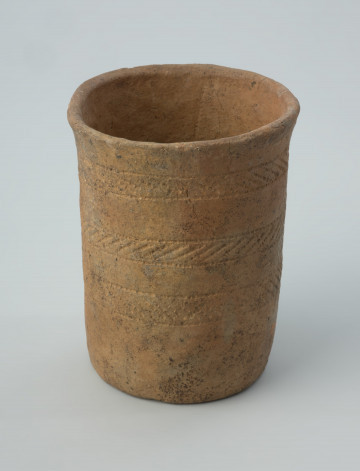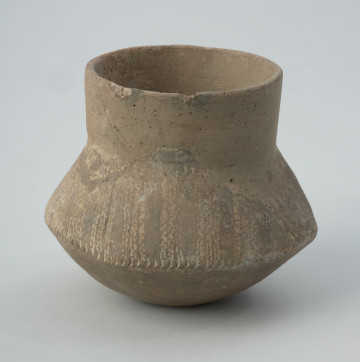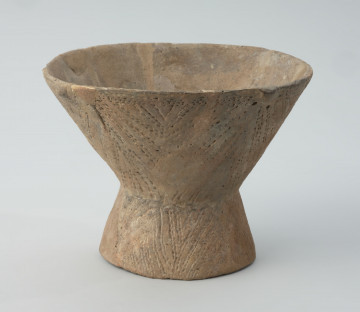
Decorated mortarboard goblet
National Museum in Szczecin
Part of the collection: Stone Age
An undecorated two-lobed amphora with a cylindrical neck was discovered in the early 1880s by a forester Pasche from the Szczecin island of Radolin, near one of the small sand hills called Haselberge (Polish: Leszczynka) on the adjacent island of Czarnołęka. The discovery of a vessel from the Younger Stone Age, unique in Pomerania at that time, caused quite a stir in the Society for History and Antiquities of Pomerania, which collected regional archaeological artefacts in Szczecin. The discovery was followed in July 1882 by a small-scale archaeological survey. Members of the Berlin Society for Anthropology, Ethnology and Prehistory also took part, including its president, Professor Rudolf Virchow, an eminent scientist, physician, anthropologist and prehistorian, originally from Pomerania. Similar research was undertaken on a neighbouring hillock a few weeks later. The excavations proved that the sandy hills on the Czarnołęka island were repeatedly inhabited in the Stone Age, Bronze Age and early Middle Ages. Numerous fragments of clay vessels, flint products, including a fragment of an axe and an arrowhead, and stone querns have been discovered here. According to Prof. R. Virchow and Dr Ingvald Undset from Oslo, the rarest fragments of decorated Neolithic pottery were divided between the Szczecin and Berlin collections. Many discoveries of graves, settlements and various types of deposits (e.g. deposited in a swamp) from the Younger Stone Age were made in Pomerania in the last decades of the 19th century. The cultural and chronological divisions of the Neolithic period worked out on their basis since the end of the century, allowed linking the finds from Czarnołęka with the Globular Amphora culture people, who inhabited the area from north-western Germany to Ukraine at the end of the 4th and in the 1st half of the 3rd millennium BC.
Krzysztof Kowalski
Author / creator
Dimensions
cały obiekt: height: 18 cm
Object type
ceramic, vessel (container)
Technique
firing, manual modelling, modelling
Material
clay
Origin / acquisition method
acquisition
Creation / finding place
Owner
National Museum in Szczecin
Identification number
Location / status

National Museum in Szczecin

National Museum in Szczecin

National Museum in Szczecin
DISCOVER this TOPIC
National Museum in Lublin
DISCOVER this PATH
Educational path